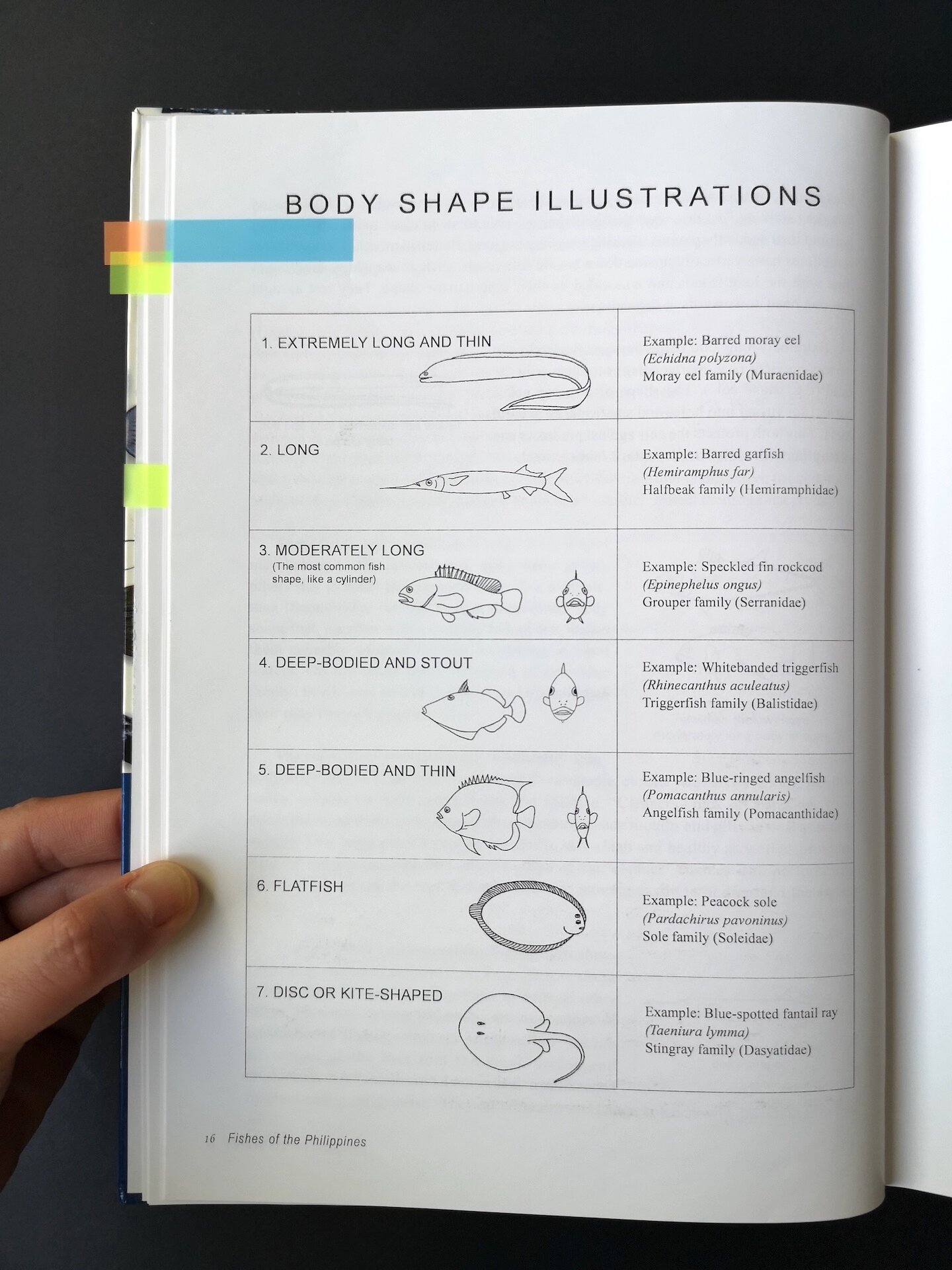Fishes of the Philippines by Genevieve Broad
Let’s take a dip into the reference collection with one of my favourites - “Fishes of the Philippines” by Genevieve Broad, a marine ecologist and university educator from the UK.
In 1998, Genevieve came to the Philippines to work on community-based projects with Voluntary Service Overseas (VSO). For two years, she worked closely with local communities from Sorsogon (in the southern Bicol region) on fisheries research and conservation programs that aimed to teach sustainable fishing techniques.
I really believe this book needs to be reprinted and equitably distributed to fishing communities across the country. What an amazing resource!
(As an aside, it took me forever to find this, so I’d say your best chances for securing a copy is to check used book sites. Though if enough of us comment below, perhaps we can sway the publishers for a reprint, or even digital distribution rights! I’ll hope and keep my fingers crossed.)
Everything described in the page above makes so much sense. I really do wonder how much Genevieve’s research has influenced or been integrated into coastal fisheries management plans - I’d love to speak with someone who knows! As she writes, “this guide is intended for the nonspecialist who needs to identify different families of fish, either for work or for pleasure.” Is it available, at least, in the libraries of colleges and universities with marine programs, or perhaps even in local government unit (LGU) offices that work with fishing cooperatives?
I for one am interested in getting a sense of just how varied Philippine fish species can be, and to what extent Filipino people have integrated locally abundant fish into their diet and food culture. I especially loved the “local names” section that accompanies most of the illustrated entries. Now if only I could spend some time doing field research myself! 😉
How the book works
“Fishes of the Philippines” is divided into three main chapters: How to Identify Fishes, A Visual Key to Families, and Illustrations of Fish Species by Family.
To identify fish you might see at a wet market, or encounter while swimming or snorkelling, the idea is to follow these five steps:
Determine which body shape the fish resembles most (there are 7 illustrated types)
Categorize the size of the fish (with estimated lengths for small to very large)
Note any physical features that visibly stand out, then turn to the ‘Visual Keys’ section of the book to find the right family that a fish belongs to
Look at the drawings of that family and review the description to confirm that you’ve correctly identified the fish
And since families like the goby have approximately 146 species in the Philippines, you may want to cross-reference more details from the description to identify the fish on a species level
In examples 1 and 2, this means that ‘rabbitfish’ is the family or genus, and what physically sets that rabbitfish apart from others (being ‘spiny’ or having a ‘gold saddle’) usually informs its Latin name, aka the species.
Fishy features
This I think is the book’s strongest selling (and equally educational) point. While I’m certain there are pamphlets and other training material from the Department of Fisheries, I don’t know of any existing resources (accessible to individual consumers or communities) for easily identifying types of fish in the Philippines.
In following the five steps above, you’ll definitely have to flip through the following sections.
To identify body shape:
To determine what kind of dorsal fin it has:
To identify the tail shape:
Note the mouth position:
Keep an eye for outstanding features on the fish’s head:
Note their behaviour:
Local names
I learned quite a few new ones for the fish I remembered seeing in our neighbourhood market, growing up in Manila. Here are some of my favourites!
Hairtails = Espada (Tagalog), Liwit (Visayan)
Anchovies = Dilis (Tagalog), Silag (Bicolano)
Salmon catfish = Kanduli (Tagalog), Tabangogo (Visayan)
Tuna = Tulingan (Tagalog), Barilis (Visayan)
Mackerel = Hasa-hasa (Tagalog), Tikab (Visayan)
Grouper = Lapu-lapu (Tagalog), Maskad (Ilocano), 18 local names in Visayan (!)
Rabbitfish = Samaral (Tagalog), Tambago (Ilonggo), Dangit (Visayan)
Ponyfish = Sapsap (Tagalog), Usub (Ilocano), Dalupani (Bicolano), Parutput (Visayan)
Since I got this book, I’ve been thinking about how a citizen science approach to documenting fishes of the Philippines would look like. With geo-tagging available on our phones for the pictures we take (and possibly even for video taken under water with all those GoPro cameras) it would be sooo awesome to see this information interactively laid out online. If you’d like to chat and make that happen, please let me know!
















